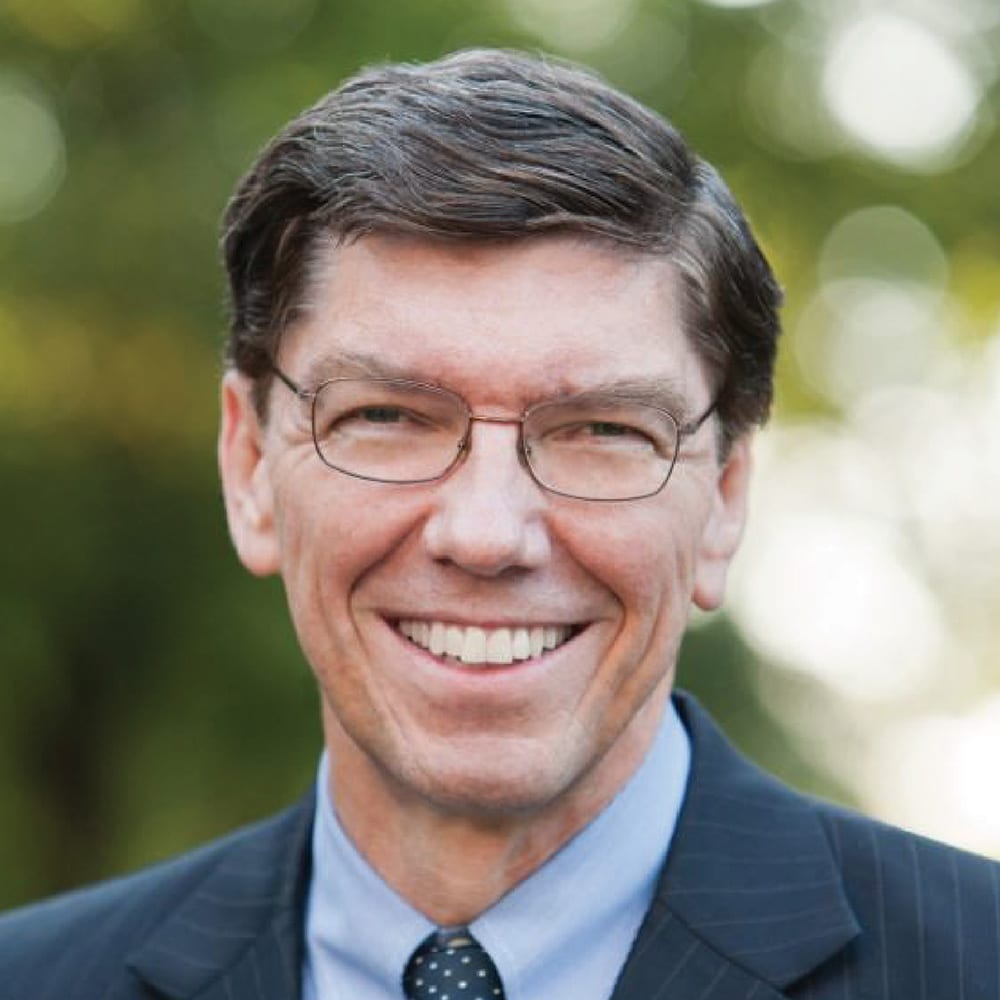Our History
What began in a kitchen from a visionary lifelong learner has helped shape entire industries toward a better future.

Our namesake and co-founder, Clayton Christensen, is widely known for coining the term “Disruptive Innovation” in his research as a Harvard Business School professor. He was also known for the thousands of students, entrepreneurs, and CEOs he taught, mentored, and inspired.
Teaching was not Clay’s first career. He’d been a Rhodes Scholar, a White House Fellow, a consultant, and a founder of a high-tech materials company in the first two decades of his professional life. In that time, he’d noticed a pattern of great companies thriving and then failing—often with the same management in place. What was it, he wondered, about “doing all of the right things”—per the brightest management minds of our day—that didn’t teach us enough about how to make success endure? This was the central question he explored in his doctoral dissertation—and the one he further explored in his best-selling first book, The Innovator’s Dilemma.
Clay wrote over a dozen books and countless articles exploring the concept of ‘Disruptive Innovation. ‘ He became a strong believer in the power of theories to help leaders make decisions informed by past data and guided by an understanding of what they could anticipate other individuals and organizations would do in the future. Disruptive Innovation became “one of the most influential business ideas of the 21st Century.” Still, throughout his career, Clay sought out “anomalies” to his ideas from friends, colleagues, students, and strangers, valuing their input and insights. He also adapted and built upon the work of other colleagues and scholars, recognizing the collective effort in advancing knowledge.
Clay’s initial work focused on the disk drive industry, but he soon discovered that Disruptive Innovation had many applications across sectors, including steel manufacturing, automobiles, national defense, consumer electronics, excavation, hospitality, and more. This broad reach of his theories underscores their relevance and applicability, making his work all the more compelling.
The Beginning of the Institute
Very early in his work, Clay saw applications for the challenges faced in our education and health care sectors and started working with research assistants, sector leaders, and former students to unpack insights from the theories. He started working with former students and other innovators to write books on each topic—Disrupting Class with Michael B. Horn and Curtis Johnson and The Innovator’s Prescription with Jason Hwang and Jerome Grossman.
As the books came together, the teams started to realize that they could throw a book out into the world and hope that it made a difference—but if they really wanted leaders in these sectors to learn from the ideas, they needed an organization from which to continue to share what they were learning.
In 2007, Clayton Christensen, Michael B. Horn, and Jason Hwang established the Clayton Christensen Institute (originally Innosight Institute). Our first office was in the kitchen of Innosight Consulting, a management consultancy founded on the principles of Clay’s ideas. Our founders’ vision was to make these ideas accessible to as many people as possible, leading us to be incorporated as a non-profit think tank.
Our work continues in both health care and education. We have expanded our work in education from an initial focus on K-12 to include higher education and workforce learning. We have also built a global prosperity practice. Despite losing Clay in 2020, we are continually exploring the implications of the theories in these and countless other sectors. We honor the legacy of Clay’s theories through our work to help innovators worldwide solve big, complicated problems.
Co-founder Michael B. Horn remembers how the Institute began:

